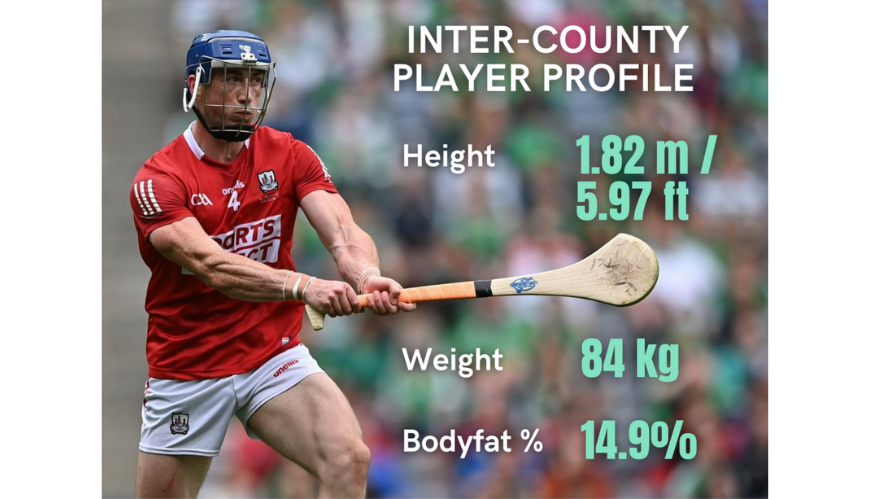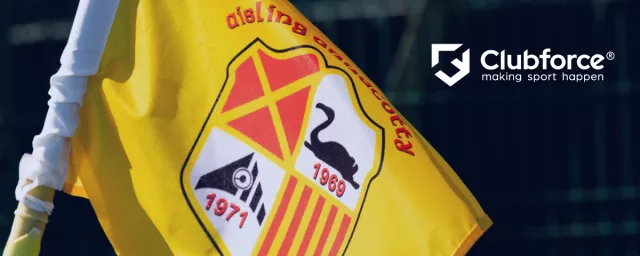
As part of a newly-launched partnership between Clubforce and Output Sports, a simple and portable athlete testing device, David Nolan, Output Sports Community Member, discusses the physical requirements to be an inter-county player and shares statistics on how fit, strong and powerful players need to be.
This blog supports our Performance Technology For The GAA live online event on Tuesday December 7th 2021. Click here to register.

Gaelic games may be an amateur sport, but our athletes are far from amateur. The physical requirements of being an inter-county player has changed greatly since Watson first investigated this question in the 1970’s. In this article I will delve into the research to answer the question of what are key physical attributes of the modern inter-county footballer and hurler?
What Does It Take to Play an Inter-County Match?
We all know an inter-county match is intense and requires a player to have a huge engine to make it through the full 70 minutes, but what are the actual demands placed on a player in those 70 minutes?
Every match is unique and different in its demands, but we have plenty of data from GPS analysis to provide us with insights into the requirements of the game. On average, players will cover 7.5 – 9km+ in a typical match, with some differences between positions and codes. Anywhere from 750-1500m of that total distance is high speed running (>17km/hr), and a further 300-500m being performed at sprinting speed (>22km/hr).
Running is just one aspect of the demands in a game. Top teams will also complete approximately 130+ hand passes, 70+ kick passes and 120+ tackles.
It goes without saying that you must be skilled, tactically aware and possess excellent game awareness to play at this level, but with such high physical demands, athletic development is of the utmost importance.
Let’s explore what research tells us are the physical attributes of the modern inter-county player are. Before we embark down this rabbit-hole, I must acknowledge that there is little data available on female players, so in this article I will focus specifically on senior male inter-county football and hurling. Also, I will speak about the attributes of the “average” inter-county player, but we must appreciate that all this data resides along a spectrum with people occupying the extremes above and below the average, and to paraphrase Sherlock Holmes;
“A famous statistician once stated that while the individual man is an insoluble puzzle, in the aggregate he becomes a mathematical certainty. You can, for example, never foretell what any one man will be, but you can, with relative precision, say what an average man is.”
What Size is the Typical Inter-County Player?
An inter-county player is certainly not a small man. When we aggregate the data of over 650 elite players (albeit with some likely duplicates across studies) we find that the average player stands at 1.82m (a smidge under 6 feet in old money) and weighs in at just over 84kg.Research carried out by Robert Davies and colleagues at the University of Limerick using the gold standard method of DXA found that the average bodyfat percentage of 190 inter-county players (144 hurlers, 46 footballers) was a lean 14.9%.

How Strong and Powerful is an Inter-County Player?
As you might expect, teams are not too keen on sharing the specific performance data of their squads. It takes a bit of digging to find out how the average inter-county player performs in the gym, but we do have some research to help us answer this question.
Research by Kelly and Collins found that in a squad of players, the average maximal deadlift was approximately 160kg (1.85x bodyweight), and maximum bench press ranged from approximately 87.5-112kg (1-1.3x bodyweight). The same team had an average vertical jump (CMJ) height of approximately 40cm. These findings are similar to those of 148 players by Shovlin and his colleagues in which the average vertical jump height was 38cm. This group also performed a squat jump test and averaged 36.1cm.

How Fast is an Inter-County Player?
When it comes to measuring speed, we can do it in two primary ways; i) measure time taken to cover a certain distance in a controlled laboratory or field setting, and ii) analyze GPS data from match-play and measure maximal velocity achieved.
When we look at controlled laboratory measures, we find that the average inter-county player can cover a distance of 5m in about 1.1 seconds, 10m in 1.8 seconds, and sprint 20m in approximately 3.1 seconds. When we look at GPS data from actual gameplay, we find that most players are hitting top velocities in the region of 27-30km/hr, with some players achieving speeds in excess of 32km/hr. These are impressive velocities to achieve in open play as the average sprint distance in a match is 18.6m, yet it likely requires a sprint distance of 40-60m for a player to achieve their true maximal velocity, so their actual maximal sprint speed is likely higher than what is achieved in a match.

How “Fit” is an Inter-County Player?
We have already looked at the game demands of playing at this level, so it is evident that players are extremely fit with high work capacities, but how do they perform on standarised tests? Again, teams don’t tend to make this information publicly available so we have to rely on what we can glean from research to inform us.
The research available to us has utilized the Yo-Yo intermittent recovery test level 2 (Yo-YoIR2), which was designed for elite level athletes and assesses a player’s ability to perform repeated high-intensity efforts, stressing both their anaerobic and aerobic capacity. Kelly and Collins found the distance covered in the Yo-YoIR2 by a panel of inter-county players ranged from approximately 1200-1800m. Another study of almost 150 players found a mean distance covered in the Yo-YoIR2 of just under 1600m, with some players achieving almost 2km. These scores would be comparable with elite athletes from other sports.
Conclusion:
Inter-county footballers and hurlers are amateur players, but elite athletes. The profile of the modern player will continue to develop as the nature of the game advances and progresses in its professionalism. High levels of strength, power and conditioning are now non-negotiables to compete at inter-county level. As the nature of sports science support and resources available to teams continues to grow, it will likely lead to further improvement in the athletic abilities of our players at all levels. When we compare the modern player to those researched by Watson in the 1970’s, one cannot but wonder what the abilities of players will be in the next 50 years?





